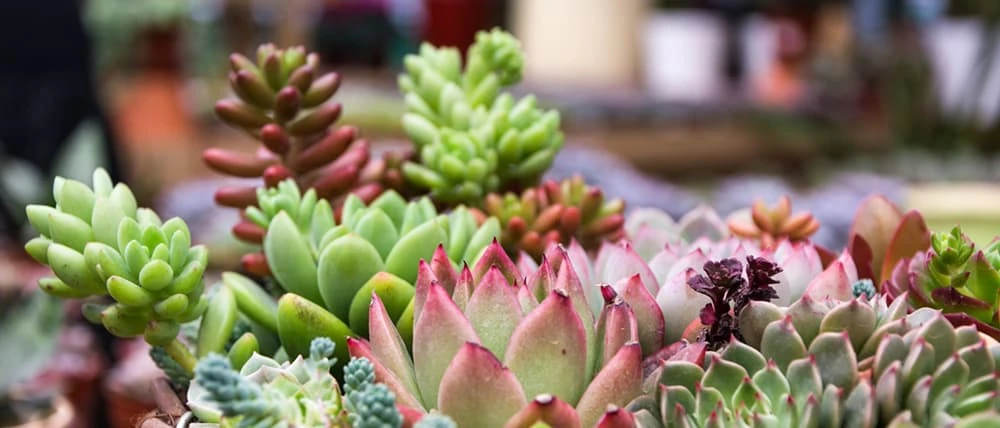Do Your Succulents Need a Grow Light? Find Out Here!
Have your once plump, brightly colored succulents started to look a little stretched or pale? Maybe they’re leaning towards the nearest window, reaching for sunlight. While they’re still alive and generally healthy, these signs often mean one thing: they’re not getting enough light.
Although succulents have a reputation for being low-maintenance, many varieties actually need plenty of sunlight to thrive, especially during the winter months or when grown indoors. This brings up an important question: Should you invest in a grow light to ensure your succulents remain healthy and vibrant when natural light falls short?
Natural lighting requirements of succulents
Succulents need sunlight to stay healthy and grow well. Most succulents come from arid tropical regions. So they love light, direct sunlight for several hours each day. Ideally, they should get at least 6 hours of sunlight daily.
However, when grown indoors, it can be hard for them to get enough light, even if they’re placed near a south-facing window. This is especially true during winter when days are shorter. Without enough sunlight, succulents may grow tall and stretched out as they reach for light. This is called “etiolated” growth and can make the plant weak.
Do all succulents need a grow light?
Not all succulents need a grow light when grown indoors. Succulents come in many shapes, sizes, and colors, and each type has different lighting needs.
Some succulents, like Sedum, Heuffelii, and Cactus, love sunlight. They become more colorful and healthier when they get lots of bright light. If you’re growing these types indoors and want them to look their best, it’s a good idea to use a grow light.
Other succulents, like Haworthia, Jade plants, and Air plants, can tolerate low light or even short periods of darkness. These plants can still grow well in dim indoor spaces, so they usually don’t need a grow light.

When do succulents need grow lights?
Grow lights become necessary when there isn’t enough natural light to keep your succulents healthy and looking their best. This usually happens in rooms with low light or during fall and winter, when the days are shorter and the sunlight is weaker.
Your succulents themselves will communicate their light deficiency through telltale signs like etiolation (stretching toward light sources), faded coloration, slowed growth patterns, or weak, leggy stems that can't properly support the plant.
If you’re growing high-light varieties or aim to maintain the compact growth and encourage the development of bright stress colors in your succulents, grow lights become essential tools rather than optional accessories.
How to use grow lights for succulents?
If you're thinking about using grow lights to help your succulents grow healthy and strong, you might want to know: What color of light is best? How much light do they need?
What color grow light is best for succulents?
Full spectrum LED grow lights are the best choice for succulents. These lights include red, blue, green, and other wavelengths of light that closely mimic natural sunlight.
Blue light helps prevent your succulents from becoming tall and leggy. It also encourages thicker leaves. Red light supports flowering and can boost overall plant growth. The green light helps improve leaf color and supports the plant’s natural health.
Using a full spectrum light gives your succulents a balanced mix of everything they need.
How much light do succulents need?
Succulents need the right amount of light intensity and light duration to thrive.
Most full-spectrum LED grow lights for succulents have a PPFD of around 100–200 μmol/m²/s, which is suitable for most stages of growth.
Sun-loving succulents enjoy bright, direct sunlight and can handle 8 or more hours of light each day. Indoors, aim to use grow lights for 12 to 14 hours daily. Shade-tolerant succulents do better with softer, indirect light. These types only need about 4 to 5 hours of light each day.
FAQ
Can succulents grow in office light?
Low-light tolerant succulents, such as Haworthia and Aloe Vera, can grow under office light. But if you want to ensure healthy growth and vibrant colors, supplementing full spectrum LED grow light is a more reliable option.
Will LED grow lights burn my succulents?
Yes, LED grow lights can burn your succulents if they’re too strong or too close. Watch for signs of light stress, such as brown edges on the leaves or faded colors. If you see these signs, try lowering the light intensity or moving the plant farther away from the light.
A good rule of thumb is to place your grow lights about 10 to 20 inches above the succulents. However, always check the manufacturer's guidelines, as the best distance can vary depending on the type of light.

